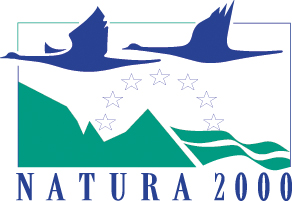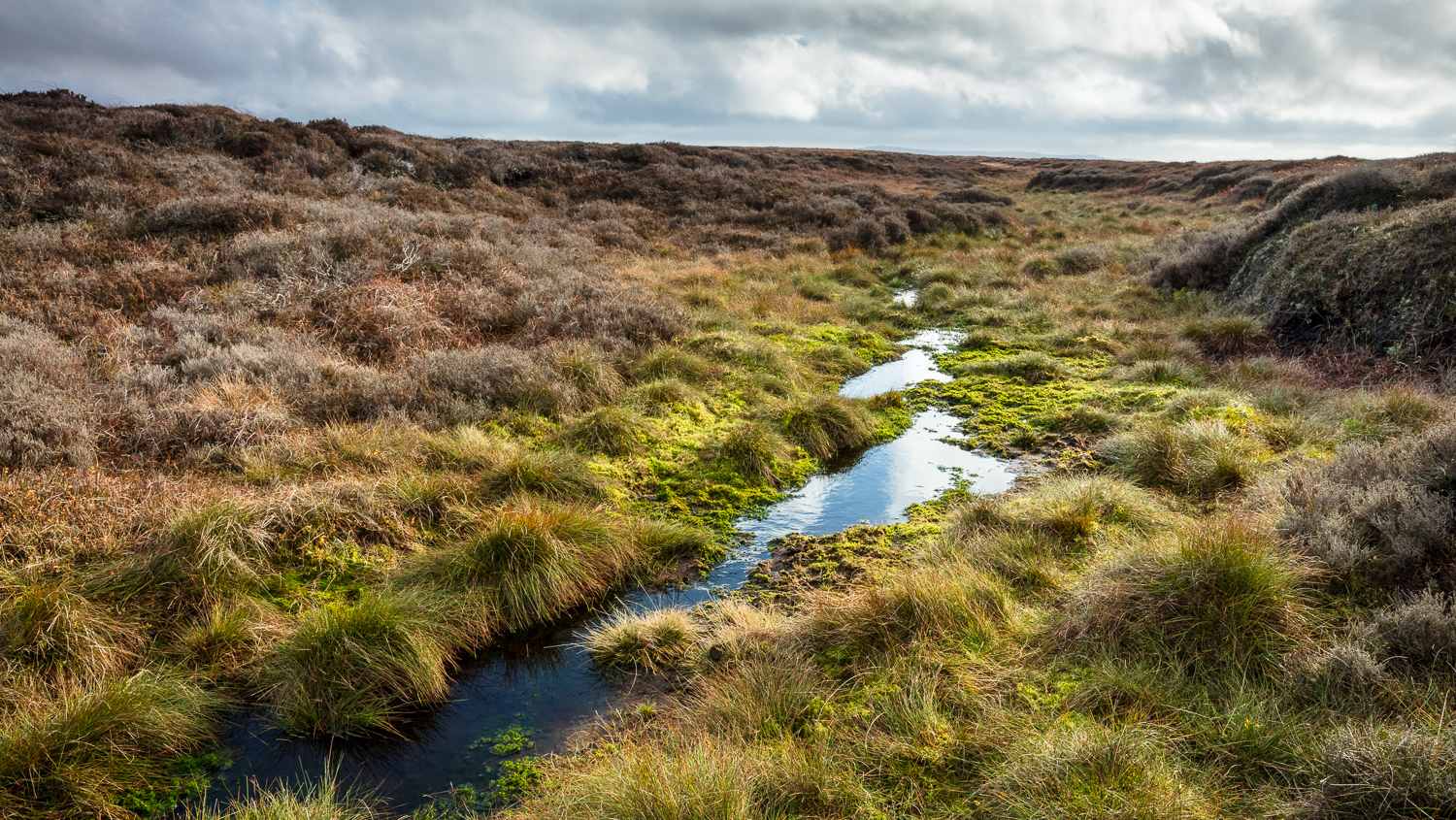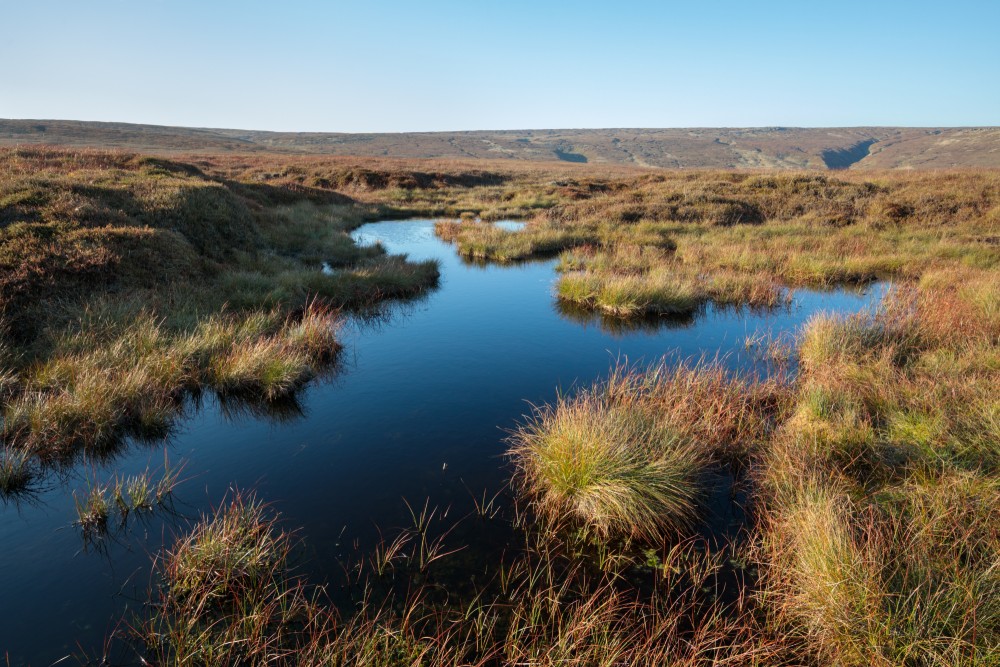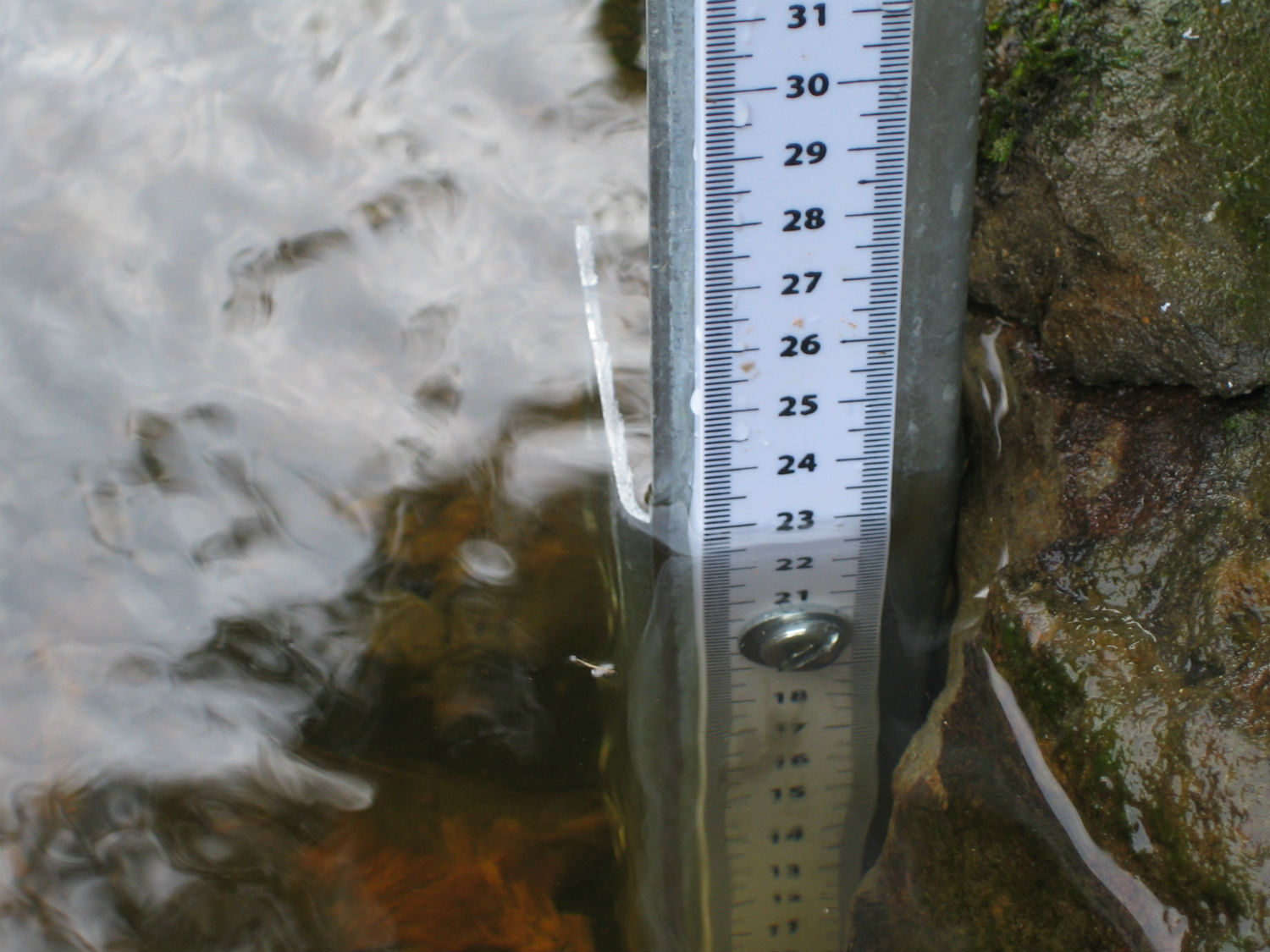Dipwell Monitoring
The impact of conservation works on the water table was monitored by a dedicated team of staff and volunteers.
During the project they collected thousands of measurements from dipwells and downloaded data from automated 'loggers'.
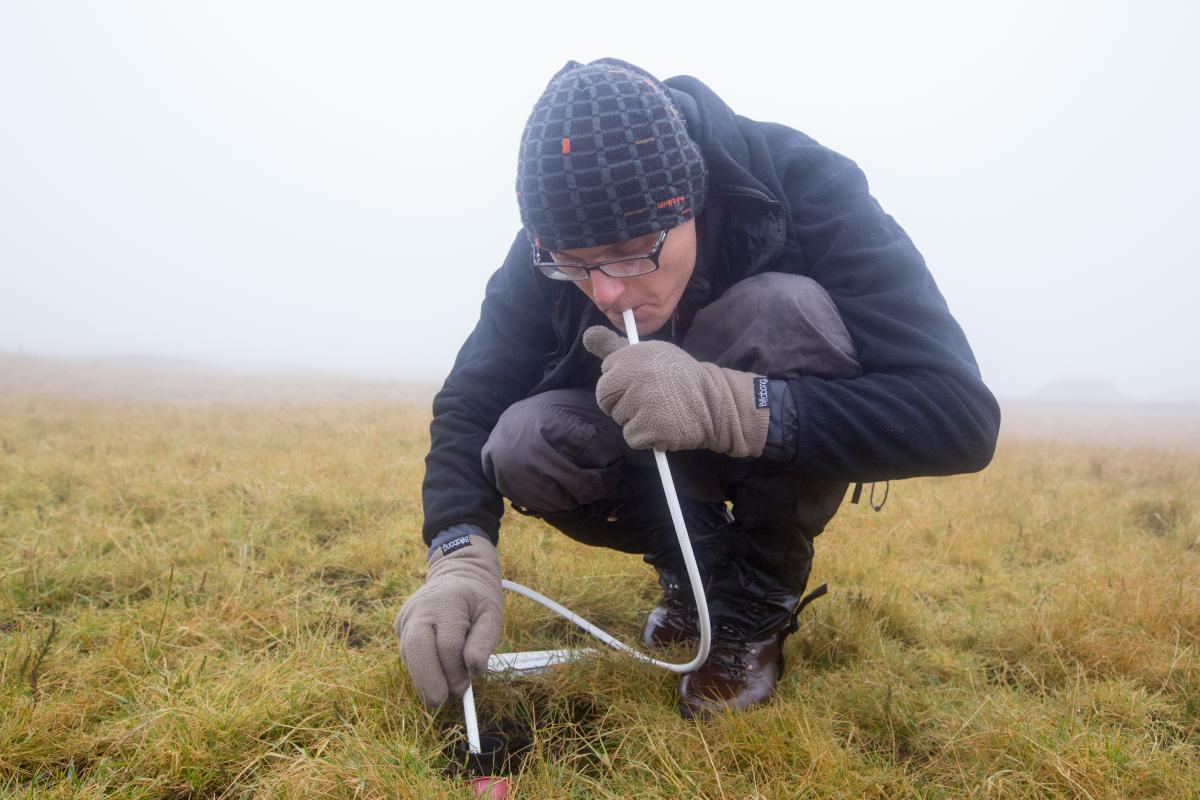
Dipwell monitoring took place on a regular basis in all weathers
The dipwells were checked manually, by blowing down a tube which is lowered into the well. When the tube reaches water, bubbles are produced and the resulting depth is measured and recorded.
This approach might seem low-tech but proved to be the most reliable.
The measurements provided details of the water levels across a range of sites.
This work provided invaluable information on the effect of our conservation work, which aimed to ‘rewet’ the moors and provide the right conditions for plants like sphagnum – vital to peat formation in active blanket bog.
Monitoring took place on intact peat which had not been damaged by industrial pollution or wildfires, and areas of bare peat as well as areas that had undergone conservation work.
You may also be interested in...
Funded by

